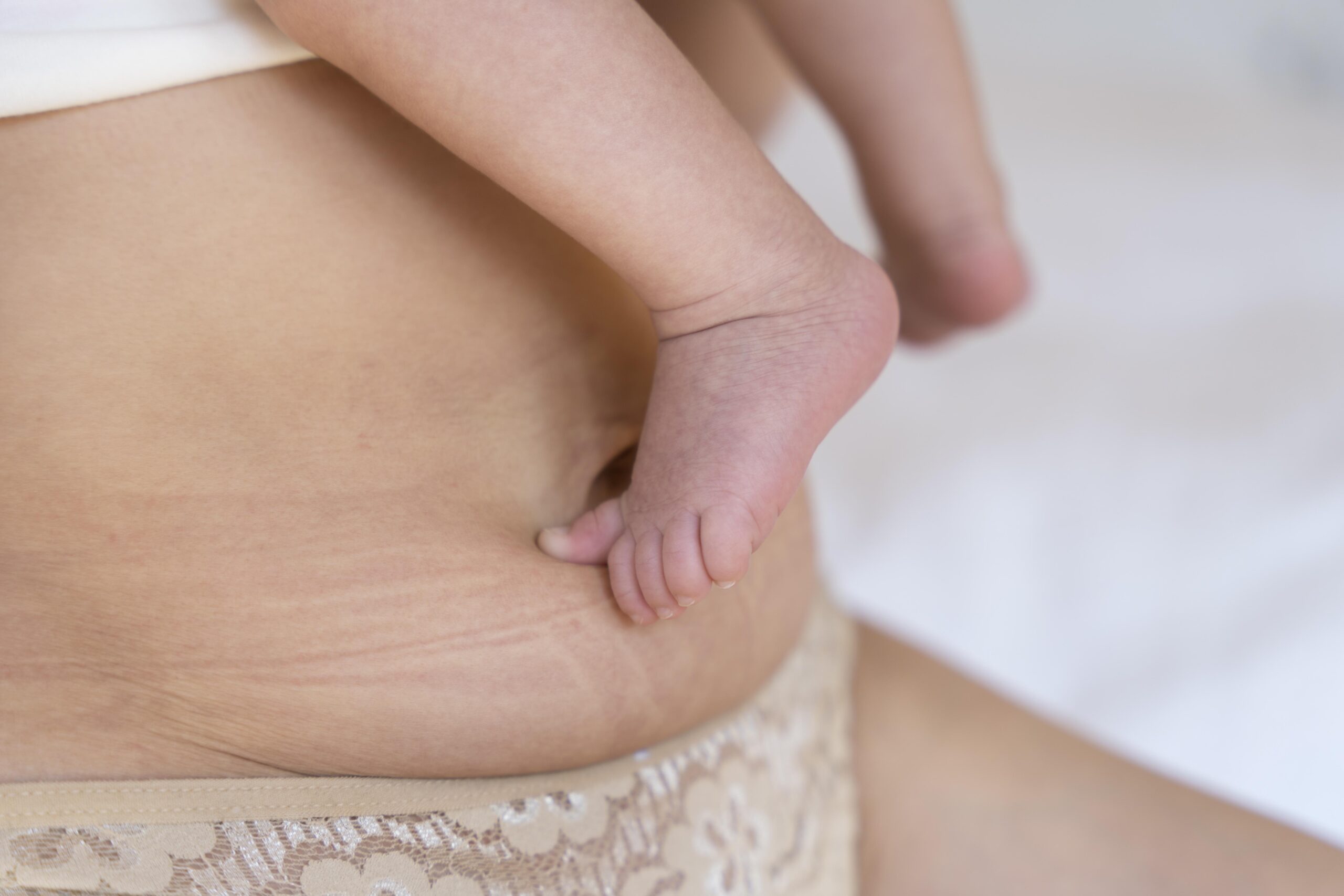Welcoming a new baby is an incredible journey, and if you’ve had a cesarean section, you’re now navigating the healing process of your C-section scar. C-section scars are a natural part of recovery after a caesarean delivery. In the first few weeks, the scar may look red, swollen or itchy, but with proper care, it gradually fades and blends into the skin over time. This article explains the expected progression of a C-section scar from the first days after surgery to one year later. It also provides practical and easy-to-follow care guidelines, such as keeping the incision clean, wearing comfortable clothes, avoiding heavy lifting, moisturising after healing and protecting the scar from the sun. We also look for important warning signs such as infection or abnormal swelling and when to seek medical advice. With patience, self-care and proper guidance, most C-section scars heal beautifully. This blog post provides reassurance, recovery tips and expert-backed advice for a smooth recovery after a C-section.

A number of mothers describe the problems that come with a C-section. While this surgical procedure can save one’s life, it does leave behind a lifelong reminder in the form of an incision.
Let’s find out how we can take care of our scars
Expected Features of the Scar :
The incision from a C-section will, in most cases, be made just above the bikini line and across the lower abdomen horizontally (also called a bikini cut). It is marked by 4 to 6 inch scars. Exceptions do apply, for example in some medical cases vertical incisions might be preferred.
The area will remain red and swollen and also look like injury in some cases throughout the surgery. C-section scars tend to heal and slowly become less raised and fainter until they reach a point where they resemble thin pale lines. It is common for each one to heal differently, though.
What Does Normal C-Section Scar Healing Look Like?
Your C-section scar will go through several distinct phases as it heals. Here’s what you can expect during your recovery timeline:
Immediate Post-Surgery (0-2 weeks)
- Appearance: The incision will be covered with surgical tape, staples, or stitches
- Color: Red or pink, possibly with some bruising around the edges
- Sensation: Numbness, tingling, or tenderness around the incision site
- Length: Typically 4-6 inches long, just above your pubic hairline
Early Healing (2-6 weeks)
- Appearance: The wound edges begin to close and knit together
- Color: May appear darker red or purple as blood flow increases to the area
- Texture: Slightly raised and firm to the touch
- Sensation: Some itching is normal as nerves begin to regenerate
Continued Progress (6 weeks-6 months)
- Appearance: The scar begins to flatten and fade
- Color: Gradually lightens from red/purple to pink
- Texture: Becomes softer and more flexible
- Sensation: Numbness may persist but often improves over time
Long-term Healing (6 months-2 years)
- Final appearance: Most scars fade to a thin, pale line
- Flexibility: Should move naturally with your body
- Sensation: Some areas may remain permanently numb, which is normal
Essential C-Section Scar Care Guidelines
Proper scar care can significantly impact your healing process and final results. Follow these evidence-based guidelines:
Keep It Clean and Dry
- Gently wash the area daily with mild soap and water
- Pat dry completely with a clean towel
- Avoid soaking in baths, pools, or hot tubs until your doctor gives clearance
- Change dressings as directed by your healthcare provider
Support Your Healing
- Wear supportive garments: A postpartum belly band can provide gentle compression and support
- Mind your movements: Avoid heavy lifting (typically nothing over 10 pounds initially)
- Get adequate rest: Your body needs energy to heal
- Stay hydrated and eat well: Proper nutrition supports tissue repair
Monitor for Complications
Contact your healthcare provider immediately if you notice:
- Increasing redness, warmth, or swelling around the incision
- Pus or unusual discharge
- Separation of wound edges
- Fever over 100.4°F (38°C)
- Severe or worsening pain
Advanced Scar Care Techniques
Once your incision has fully closed (usually around 6-8 weeks), you can incorporate these techniques to optimize healing:
Scar Massage
- Use gentle circular motions with a moisturizer or scar cream
- Start with light pressure and gradually increase as tolerated
- Massage for 5-10 minutes daily to improve flexibility and reduce adhesions
Silicone Products
- Silicone sheets or gels can help flatten and fade scars
- Apply as directed, typically for several hours daily
- Many women see improvement after consistent use for 2-3 months
Sun Protection
- Always protect your scar from UV exposure
- Use SPF 30+ sunscreen or keep the area covered
- Sun exposure can cause permanent darkening of scar tissue
When to Consider Professional Treatment
While most C-section scars heal well with basic care, some situations may benefit from professional intervention:
- Keloid or hypertrophic scars: Raised, thick scars that extend beyond the original incision
- Persistent pain or adhesions: Ongoing discomfort or movement restrictions
- Cosmetic concerns: If you’re unhappy with the scar’s appearance after 12-18 months
Treatment options may include steroid injections, laser therapy, or surgical revision. Always consult with a qualified healthcare provider or dermatologist to discuss your options.
Embracing Your Healing Journey
Remember that every woman’s healing journey is unique. Factors like genetics, age, skin type, and overall health can all influence how your scar heals. Some scars fade to nearly invisible lines, while others remain more visible – both outcomes are completely normal.
Your C-section scar represents an incredible journey and the strength of your body. With proper care, patience, and realistic expectations, most women find their scars heal well and cause minimal long-term issues.
Final Thoughts
Healing from a C-section takes time both physically and emotionally. Be patient with yourself and don’t hesitate to reach out to your healthcare team with questions or concerns. Your body has accomplished something amazing, and with the right care and attention, your scar will heal as part of that incredible story.
Always consult with your healthcare provider before starting any new scar treatment regimen. This information is for educational purposes and should not replace professional medical advice.

Leave a Reply